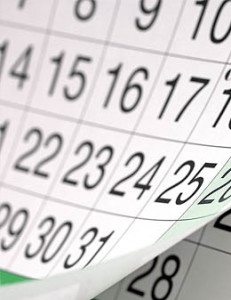Golf can seem complicated at first. So many rules, so many different kinds of clubs. Then there’s the lingo — birdie, bogie, bump-and-runs, etc. It’s a language that can scare prospective golfers off before they even pick up a club!. We will take a look at what you need to learn when you start out at golf. The first thing you need to learn are about what types of golf clubs you will need.
1.Focus on finding the sort of equipment that will allow you to develop your imperfect skills with minimal expense. There’ll be plenty of time to go after the latest, hot products on the market, (and SchiavettaGolf can get you fit into Callaway golf), but at the beginning, make learning — and not buying — your priority.
2.You don’t need a whole set of clubs.You’re allowed to carry as many as 14 clubs in your bag, but you won’t need nearly that many when you’re first learning. Instead, start with a driver, a putter, a sand wedge (it’s the club that has an “S” on the sole or a loft of 54 to 56 degrees) and supplement those with a 6-iron, an 8-iron, a pitching wedge, and a fairway wood or hybrid with 18-21 degrees of loft. These are the clubs that are the most forgiving and easiest to get airborne.
3. Try before you buy. I’ve had more then a few students say that going into golf store and looking at the selections of golf clubs make then nervous and uneasy. Sometimes you can be talked into buying clubs that you have never held in your hand, and most importantly, not getting the chance to hit them. You need to be able to hit some balls with the clubs to see if they are the right weight and flex for you. I always have my students try out clubs before they buy them. Men’s clubs are built differently than women’s clubs, and junior clubs as well. Any questions about clubs, please contact me and we an discuss what will work for you.
Once you get serious about the game and start making consistent contact, we can then talk about getting clubs that are fit properly to you and your swing.
3.. The more loft, the better: Unless you’re a strong and well-coordinated athlete experienced with stick and ball sports (baseball, softball, hockey, tennis, for example), opt for woods that have more loft. Why? The extra loft generally means it will be easier to get the ball in the air and also can reduce side spin so shots fly straighter. So go for drivers with at least 10 degrees of loft and fairway woods that start at 17 degrees, not 15 degrees.
4.Take advantage of clubs made for beginners: Some types of clubs are easier to hit than others. For one thing, you’re better off with hybrids instead of 3-, 4-, and 5-irons. And irons with wider soles (the bottom part of an iron) will negate the tendency for the club to stick in the ground when you hit too far behind the ball. Also, with more weight concentrated in the sole, the iron’s center of gravity will be lower and this will help shots launch on a higher trajectory.
5. Choose the right ball: If you’ve never played before or lose two sleeves or more a round, buy balls that cost around $20 a dozen (if you can’t decide between one brand over another, try putting a few to see how they feel coming off the putter face). When you cut the number of lost balls back to maybe three to five balls a round, buy balls that cost less than $30 a dozen. Only if you’re losing less than a sleeve a round should you consider the $40 a dozen balls.
Tip: Take Learn & Play Golf School I from SchiavettaGolf Academy !
Up next: Learning to Play


